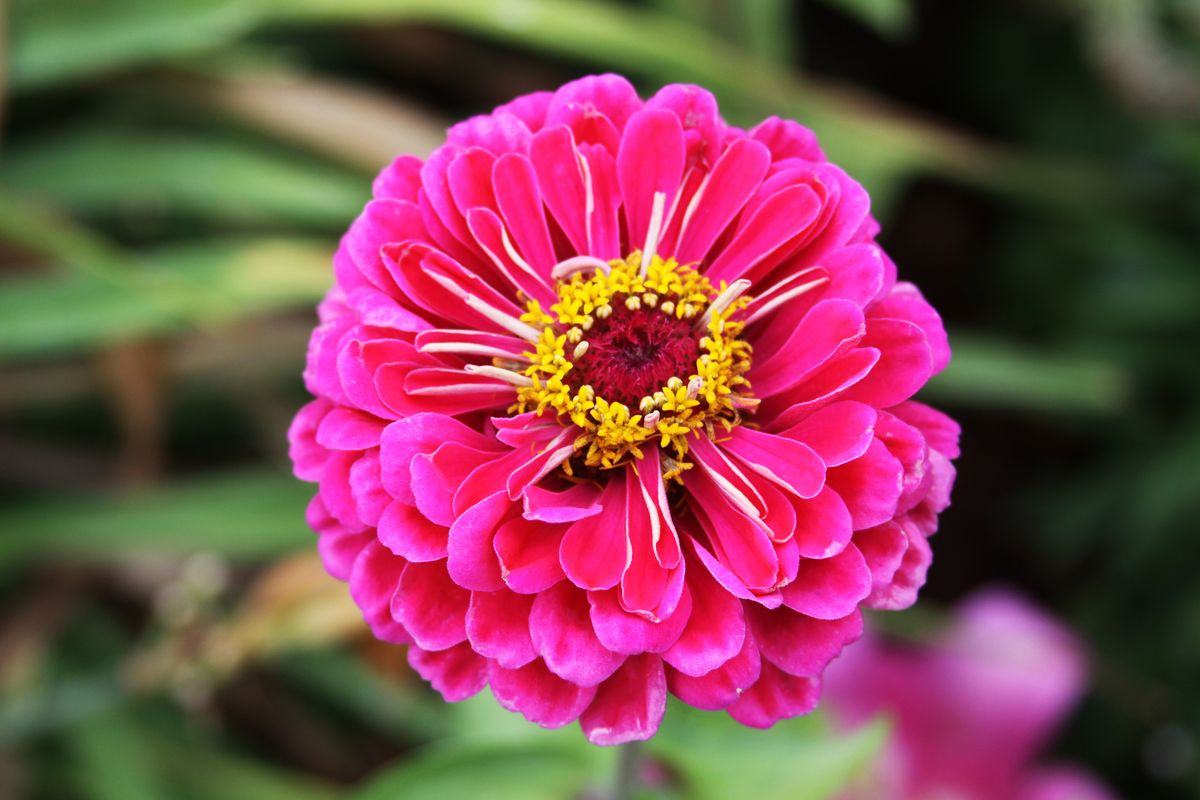In the Garden: Annuals brighten the garden with colorful blooms

I think a well-tended vegetable garden is a thing of beauty. Even so, our landscape would be rather dull if not for all of the colorful flowers I’ve planted over the years. The mainstays are perennials – coneflowers, bee balm, Gloriosa daisies and daylilies, for example – but annual flowers provide seasonlong blooms that make strolling through the garden even more pleasurable.
Annuals grow, flower, set seed and die in a single growing season. Local garden centers always have wonderful selections to choose. Here’s a sampling of the ones I’m growing from seed this year:
Aster, Tower Chamois – Not to be confused with fall-blooming asters, which come back each year, annual asters are highly prized for their large, attractive flower heads that look stunning in the garden and bouquets. While perusing a seed catalog this winter, I didn’t know that I needed this flower, but the creamy peach blossoms of Tower Chamois made them a must-have. Full sun, 24 to 30 inches tall.
Calendula, Zeolights – Many gardeners are familiar with calendulas – also known as pot marigolds – because their flowers are pollinator magnets and edible, as well. The Botanical Interests catalog’s description of this cultivar’s blossoms is what won me over: “Bronzy orange petals fade to a delicate light pink, artfully contrasting with the yellow base and maroon back.” Full sun, 12 to 24 inches tall.
Lupine, Pixie Delight – Most lupines are biennials, meaning they live two years, but Pixie Delight is a true annual. The bi-colored pastel flower stalks caught my eye, and their deer resistance makes them even more desirable. Full sun to part shade, 12 to 18 inches tall.
Marigold, Big Duck Yellow – This amazing, large-flowered marigold has become a mainstay in my vegetable garden. The plants bloom all summer long, yet need minimal deadheading. Full sun, 15 inches tall.
Nasturtium – These might seem like old-fashioned flowers, but the types and colors available today make them very appealing for use both in flower beds and the vegetable garden. Nasturtium flowers are also edible, but remember to avoid the use of chemicals so you can safely add them to dishes. Look for cultivars with climbing or mounding growth habits to suit your needs. My current favorites are Amazon Jewel, Orchid Flame and Phoenix (climbing); and Cherries Jubilee, Mahogany and Vanilla Berry (mounding). Full sun to part shade, heights vary.
Rudbeckia, Sahara – I grew this new Gloriosa daisy mix last year and am curious to see if they will come back this spring since they are billed as half-hardy annuals. The pale rose, copper and russet blossoms were both stunning and prolific. I’ve started some extra seeds indoors just in case the plants didn’t care for our winter. The flowers attract pollinators and are deer resistant. Full sun, 18 to 24 inches tall.
Sunflowers – These flowers always bring a smile to my face, but they also attract a wide variety of pollinators and birds. Sunflowers are easy to grow and do best when direct-sown in the garden after the danger of frost has passed. My favorites include Autumn Beauty, Lemon Queen, Peach Passion and Van Gogh. Full sun, heights vary.
One of my goals this year is to interplant flowers in the vegetable garden to attract beneficial insects and increase plant diversity. This should make the garden a colorful place to enjoy while giving the good bugs a nice home base.
Susan Mulvihill is author of “The Vegetable Garden Pest Handbook.” She can be reached at susan@susansinthegarden.com. Watch this week’s “Everyone Can Grow a Garden” video at youtube.com/susansinthegarden.